Dynamic Channel Selection of Microwave Temperature Sounding Channels under Cloudy Conditions
Abstract
1. Introduction
2. Theory
2.1. Radiative Transfer Equation Considering Cloud Liquid Water
2.2. Sensitivity of CLW Profiles to Radiance
3. Methodology
3.1. Dynamic Channel Selection
3.2. Cloud Parameters in MWTS-2 FOVs
4. Simulations of Brightness Temperature
4.1. Experimental Design
4.2. Comparison of Cloud Parameters between MERSI-2 and MWTS-2
5. Analysis of Experimental Results
5.1. The 12-hour Experiment
5.1.1. Impact of DCS on the Quantity of MWTS-2 Observations
5.1.2. O-B Diagnosis
5.2. The Long-term Time Series Experiments
6. Discussion
7. Conclusions
Author Contributions
Funding
Acknowledgments
Conflicts of Interest
References
- Andersson, E.; Pailleux, J.; Thépaut, J.N.; Eyre, J.R.; McNally, A.P.; Kelly, G.A.; Courtier, P. Use of cloud-cleared radiances in three/four-dimensional variational data assimilation. Quart. J. R. Meteorol. Soc. 1994, 120, 627–653. [Google Scholar] [CrossRef]
- Andersson, E.; Haseler, J.; Undén, P.; Courtier, P.; Kelly, G.; Vasiljevic, D.; Brankovic, C.; Cardinali, C.; Gaffard, C.; Hollingsworth, A.; et al. The ECMWF implementation of three-dimensional variational assimilation (3D-Var). III: Experimental results. Quart. J. R. Meteorol. Soc. 1998, 124, 1831–1860. [Google Scholar] [CrossRef]
- Derber, J.C.; Wu, W.S. The Use of TOVS Cloud-Cleared Radiances in the NCEP SSI Analysis System. Mon. Weather Rev. 1998, 126, 2287–2299. [Google Scholar] [CrossRef]
- Rabier, F. Overview of global data assimilation developments in numerical weather-prediction centres. Quart. J. R. Meteorol. Soc. 2005, 131, 3215–3233. [Google Scholar] [CrossRef]
- Garand, L.; Buehner, M.; Heilliette, S.; Macpherson, S.R.; Beaulne, A. Satellite radiance assimilation impact in new Canadian ensemble-variational syste. In Proceedings of the 2013 EUMETSAT Meteorological Satellite Conference, Vienna, Austria, 16–20 September 2013. EUMETSAT, Session 12, Paper 4. [Google Scholar]
- Joo, S.; Eyre, J.; Marriott, R. The impact of MetOp and other satellite data within the Met office global NWP system using an adjoint-based sensitivity method. Mon. Wea. Rev. 2013, 141, 3331–3342. [Google Scholar] [CrossRef]
- Cucurull, L.; Anthes, R.A.; Tsao, L.-L. Radio occultation observations as anchor observations in numerical weather prediction models and associated reduction of bias corrections in microwave and infrared satellite observations. J. Atmos. Oceanic Technol. 2013, 31, 20–32. [Google Scholar] [CrossRef]
- Lawrence, H.; Bormann, N.; Sandu, I.; Day, J.; Farnan, J.; Bauer, P. Use and impact of Arctic observations in the ECMWF Numerical Weather Prediction system. Quart. J. R. Meteorol. Soc. 2019, 145, 3432–3454. [Google Scholar] [CrossRef]
- Li, J.; Wang, P.; Han, H.; Li, J.; Zheng, J. On the assimilation of satellite sounder data in cloudy skies in numerical weather prediction models. J. Meteorol. Res. 2016, 30, 169–182. [Google Scholar] [CrossRef]
- English, S.J.; Renshaw, R.J.; Dibben, P.C.; Smith, A.J.; Payer, P.J.; Poulsen, C.; Saunders, F.W.; Eyre, J.R. A comparison of the impact of TOVS arid ATOVS satellite sounding data on the accuracy of numerical weather forecasts. Quart. J. R. Meteorol. Soc. 2000, 126, 2911–2931. [Google Scholar] [CrossRef]
- McNally, A.P.; Derber, J.C.; Wu, W.; Katz, B.B. The use of TOVS level-1b radiances in the NCEP SSI analysis system. Quart. J. R. Meteorol. Soc. 2000, 126, 689–724. [Google Scholar] [CrossRef]
- Xie, Y.; Fan, S.; Chen, M.; Shi, J.; Zhong, J.; Zhang, X. An Assessment of Satellite Radiance Data Assimilation in RMAPS. Remote Sens. 2019, 11, 54. [Google Scholar] [CrossRef]
- Cardinali, C.; Prates, F. Performance measurement with advanced diagnostic tools of all-sky microwave imager radiances in 4D-Var. Quart. J. R. Meteorol. Soc. 2011, 137, 2038–2046. [Google Scholar] [CrossRef]
- Li, J.; Qin, Z.; Liu, G. A new generation of Chinese FY-3C microwave sounding measurements and the initial assessments of its observations. Int. J. Remote Sens. 2016, 37, 4035–4058. [Google Scholar] [CrossRef]
- Bormann, N.; Fouilloux, A.; Bell, W. Evaluation and assimilation of ATMS data in the ECMWF system. J. Geophys. Res. Atmos. 2013, 118, 12,970–12,980. [Google Scholar] [CrossRef]
- Li, J.; Liu, G. Direct assimilation of Chinese FY-3C Microwave Temperature Sounder-2 radiances in the global GRAPES system. Atmos. Meas. Tech. 2016, 9, 3095–3113. [Google Scholar] [CrossRef]
- Liu, Z.; Craig, S.S.; Snyder, C.; Ha, S. Impact of Assimilating AMSU-A Radiances on Forecasts of 2008 Atlantic Tropical Cyclones Initialized with a Limited-Area Ensemble Kalman Filter. Mon. Weather Rev. 2012, 140, 4017–4034. [Google Scholar] [CrossRef]
- Saunders, R.; Hocking, J.; Turner, E.; Rayer, P.; Rundle, D.; Brunel, P.; Vidot, J.; Roquet, P.; Matricardi, M.; Geer, A.; et al. An update on the RTTOV fast radiative transfer model (currently at version 12). Geosci. Model Dev. 2018, 11, 2717–2737. [Google Scholar] [CrossRef]
- Weng, F.; Liu, Q. Satellite Data Assimilation in Numerical Weather Prediction Models. Part I: Forward Radiative Transfer and Jacobian Modeling in Cloudy Atmospheres. J. Atmos. Sci. 2003, 60, 2633–2646. [Google Scholar] [CrossRef]
- English, S.J. Issues in the assimilation of cloud and precipitation affected radiances and prospects for future instruments. In Proceedings of the ECMWF Seminar on Recent Development in the use of Satellite Observations in Numerical Weather Prediction, Reading, UK, 3–7 September 2007; ECMWF Publication. pp. 59–74. [Google Scholar]
- Bauer, P.; Moreau, E.; Chevallier, F.; O’Keeffe, U. Multiple-scattering microwave radiative transfer for data assimilation applications. Quart. J. R. Meteorol. Soc. 2006, 132, 1259–1281. [Google Scholar] [CrossRef]
- Liu, S.; Chu, Z.; Yin, Y.; Liu, R. Evaluation of MWHS-2 Using a Co-located Ground-Based Radar Network for Improved Model Assimilation. Remote Sens. 2019, 11, 2338. [Google Scholar] [CrossRef]
- English, S.J.; Renshaw, R.J.; Dibben, P.; Eyre, J.R. The AAPP module for identifying precipitation, ice cloud, liquid water and surface type on the AMSU-A grid. Proceeding of the 9th International TOVS Study Conference, Igls, Austria, 20–26 February 1997; pp. 119–130. [Google Scholar]
- Gérard, E.; Rabier, F.; Lacroix, D. Use of ATOVS raw radiances in the operational assimilation system at Météo-France. In Proceedings of the International TOVS Study Conference-XIII, SteAdele, QC, Canada, 29 October–4 November 2003; pp. 20–29. [Google Scholar]
- Bennartz, R.; Thoss, A.; Dybbroe, A.; Michelson, D.B. Precipitation analysis using the Advanced Microwave Sounding Unit in support of nowcasting applications. Meteorol. Appl. 2002, 9, 177–189. [Google Scholar] [CrossRef]
- Candy, B.; English, S.; Renshaw, R.; Macpherson, B. Use of AMSU data in the met office UK mesoscale model. In Proceedings of the International TOVS Study Conference-XIII, Sainte Adele, QC, Canada, 29 October–4 November 2003. [Google Scholar]
- Zou, X.; Qin, Z.; Weng, F. Improved Quantitative Precipitation Forecasts by MHS Radiance Data Assimilation with a Newly Added Cloud Detection Algorithm. Mon. Weather Rev. 2013, 141, 3203–3221. [Google Scholar] [CrossRef]
- Qin, Z.; Zou, X. Development and initial assessment of a new land index for microwave humidity sounder cloud detection. J. Meteorol. Res. 2016, 30, 12–37. [Google Scholar] [CrossRef]
- Li, J.; Zou, X. A Quality Control Procedure for FY-3A MWTS Measurements with Emphasis on Cloud Detection Using VIRR Cloud Fraction. J. Atmos. Ocean. Tech. 2013, 30, 1704–1715. [Google Scholar] [CrossRef][Green Version]
- Han, H.; Li, J.; Goldberg, M.; Wang, P.; Li, J.; Li, Z.; Sohn, B.-J.; Li, J. Microwave Sounder Cloud Detection Using a Collocated High-Resolution Imager and Its Impact on Radiance Assimilation in Tropical Cyclone Forecasts. Mon. Weather Rev. 2015, 144, 3937–3959. [Google Scholar] [CrossRef]
- Muller, B.M.; Fuelberg, H.E.; Xiang, X. Simulations of the Effects of Water Vapor, Cloud Liquid Water, and Ice on AMSU Moisture Channel Brightness Temperatures. J. Appl. Meteorol. 1994, 33, 1133–1154. [Google Scholar] [CrossRef]
- Geer, A.J.; Lonitz, K.; Weston, P.; Kazumori, M.; Okamoto, K.; Zhu, Y.; Liu, E.H.; Collard, A.; Bell, W.; Migliorini, S. All-sky satellite data assimilation at operational weather forecasting centres. Quart. J. R. Meteorol. Soc. 2018, 144, 1191–1217. [Google Scholar] [CrossRef]
- Geer, A.; Ahlgrimm, M.; Bechtold, P.; Bonavita, M.; Bormann, N.; English, S.; Fielding, M.; Forbes, R.; Hogan, R.; Holm, E.; et al. Assimilating observations sensitive to cloud and precipitation. In ECMWF Technical Memorandum; European Centre for Medium-Range Weather Forecasts: Reading, UK, 2017. [Google Scholar]
- Saunders, R.; Matricardi, M.; Brunel, P. An improved fast radiative transfer model for assimilation of satellite radiance observations. Quart. J. R. Meteorol. Soc. 1999, 125, 1407–1425. [Google Scholar] [CrossRef]
- Liebe, J. MPM—An atmospheric millimeter-wave propagation model. Int. J. Infrared Milli. 1989, 10, 631–650. [Google Scholar] [CrossRef]
- Garand, L.; Turner, D.S.; Larocque, M.; Bates, J.; Boukabara, S.; Brunel, P.; Chevallier, F.; Deblonde, G.; Engelen, R.; Hollingshead, M.; et al. Radiance and Jacobian intercomparison of radiative transfer models applied to HIRS and AMSU channels. J. Geophys. Res. Atmos. 2001, 106, 24017–24031. [Google Scholar] [CrossRef]
- Saunders, R.; Matricardi, M.; Geer, A. RTTOV9.1 Users Guide; EUMETSAT NWP SAF: Exeter, UK, 2008. [Google Scholar]
- Weng, F.; Grody, N.C. Retrieval of cloud liquid water using the special sensor microwave imager (SSM/I). J. Geophys. Res. Atmos. 1994, 99, 25535–25551. [Google Scholar] [CrossRef]
- Klaes, D.; Schraidt, R. The European ATOVS and AVHRR processing package (AAPP). In Proceedings of the 10th International TOVS Study Conference, Boulder, CO, USA, 27 January –2 February 1999; pp. 288–294. [Google Scholar]
- Cao, G.; Qi, C.; Ma, G.; Zhang, F.; Wu, X. Mapping Cloud Mask of FY-3A VIRR to IRAS. Remote Sens. Tech. Appl. 2008, 23, 89–92. [Google Scholar]
- Auligne, T.; McNally, P.; Dee, P. Adaptive bias correction for satellite data in a numerical weather prediction system. Q. J. Roy. Meteorol. Soc. 2007, 133, 631–642. [Google Scholar] [CrossRef]
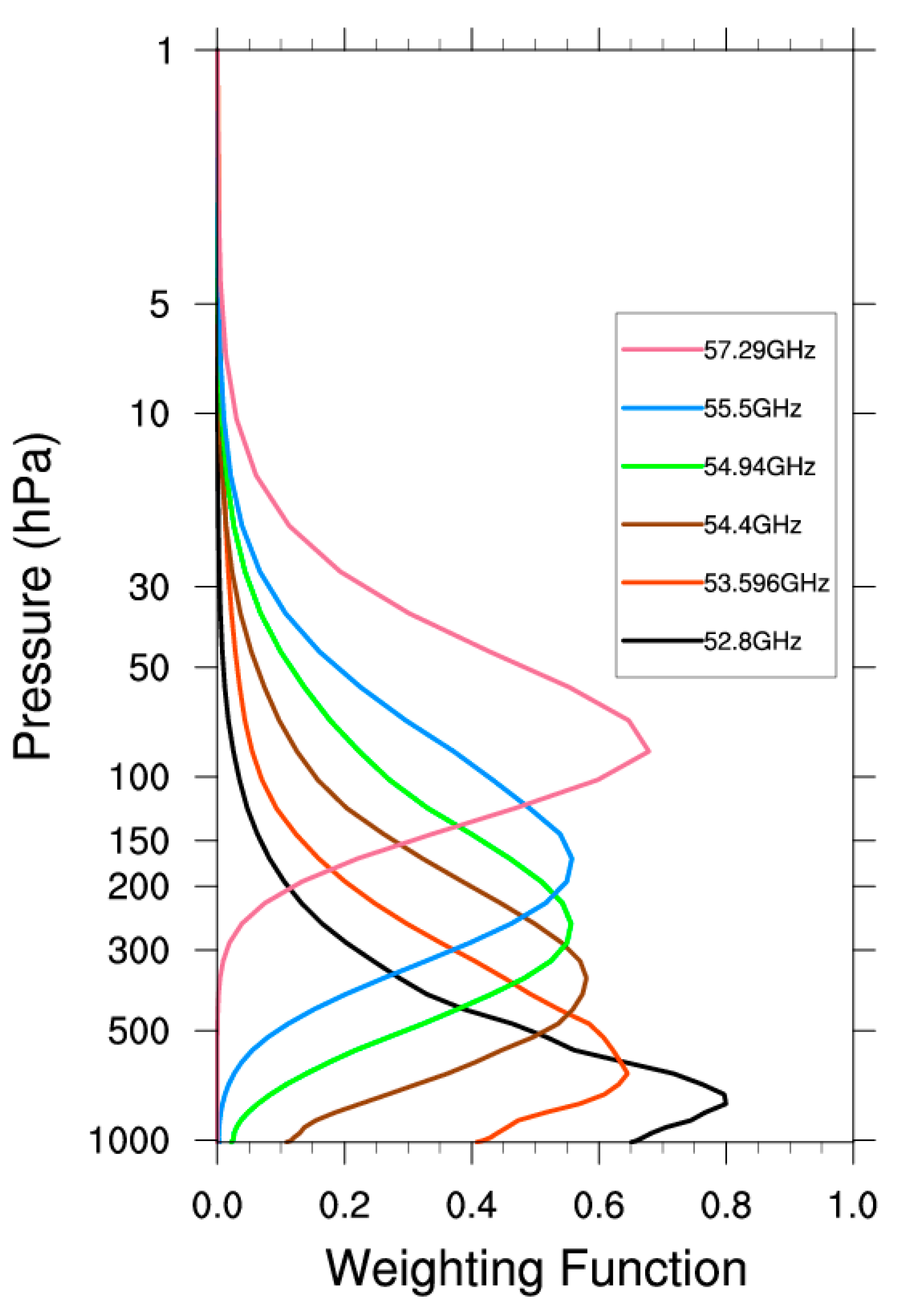
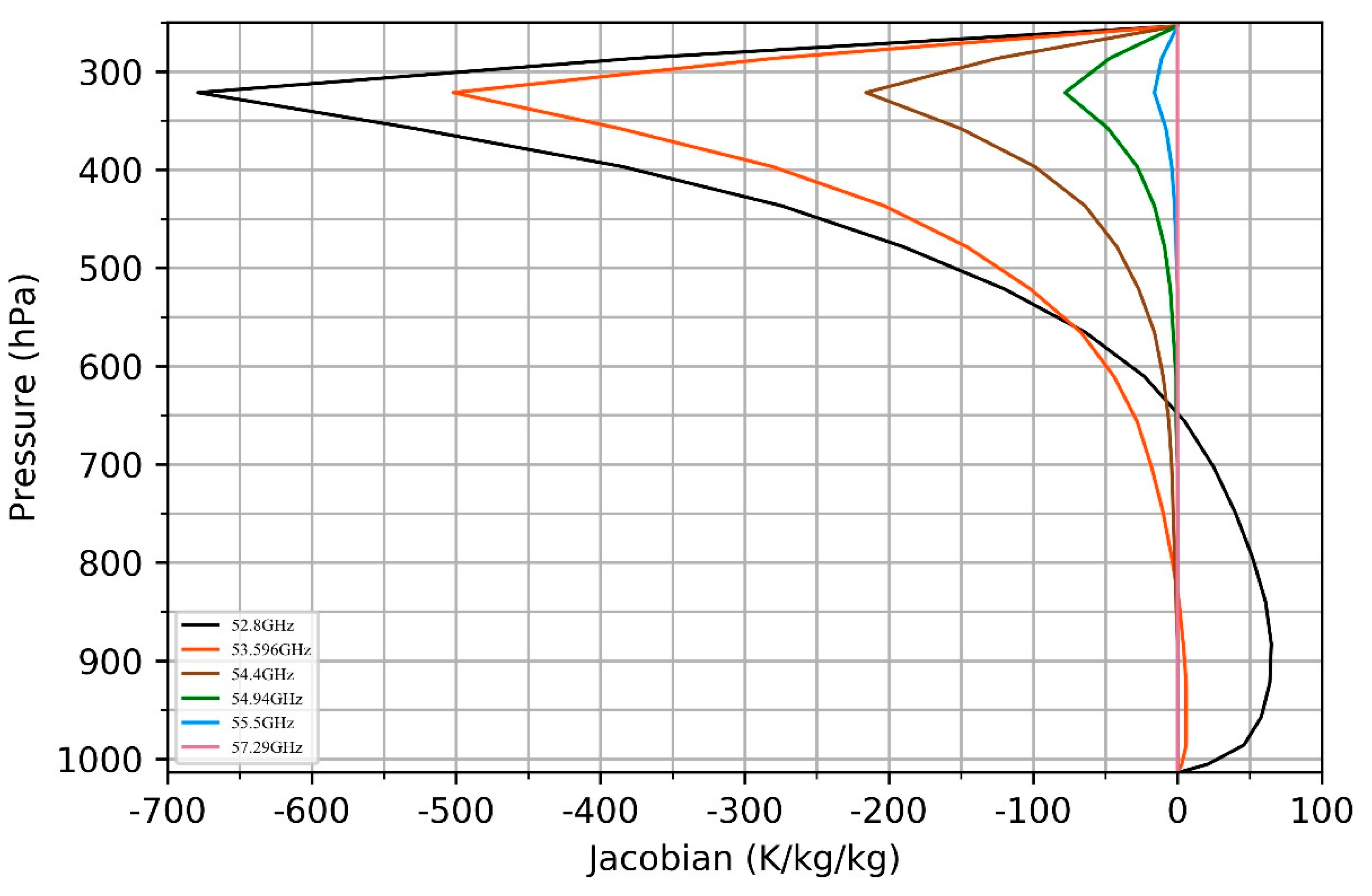
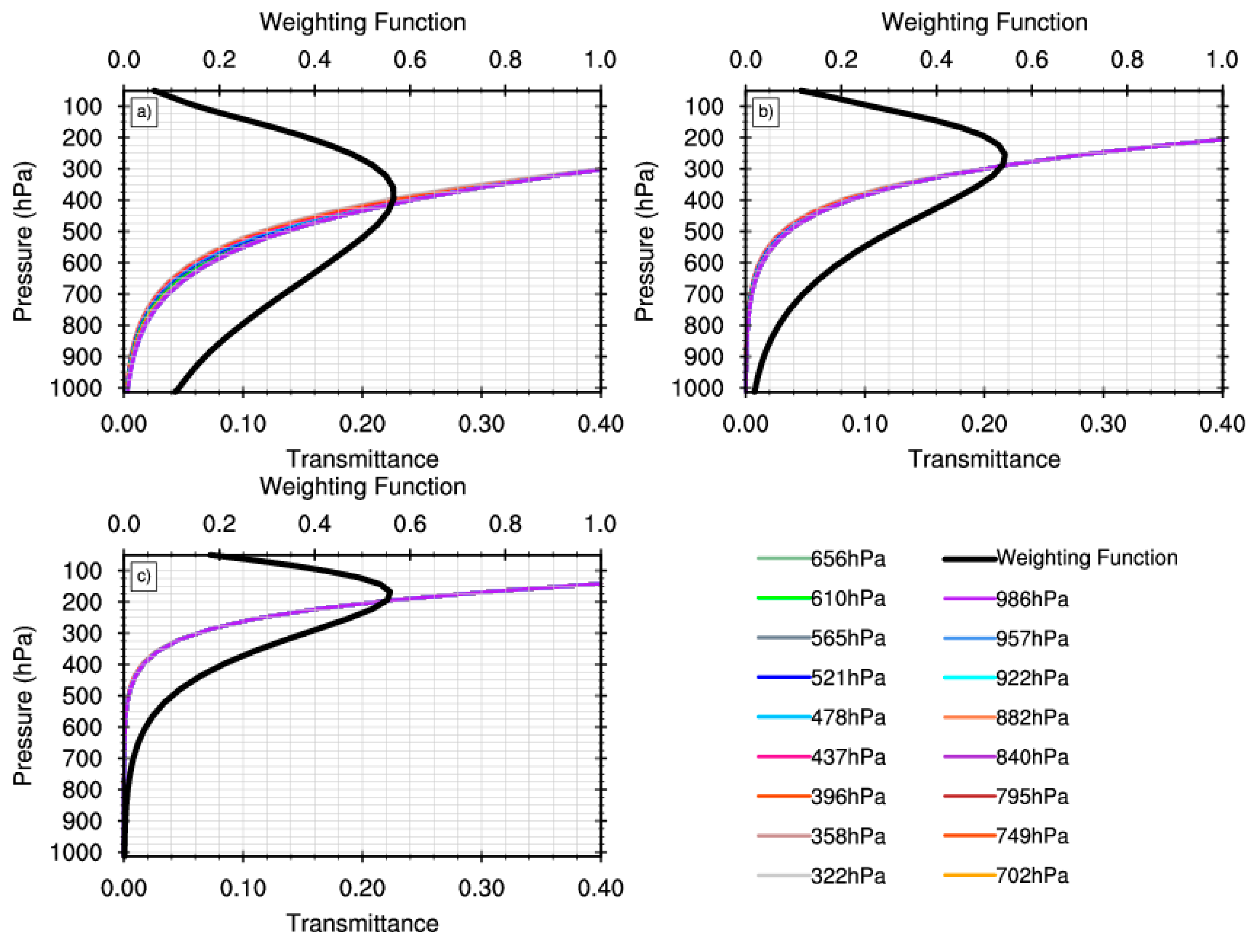
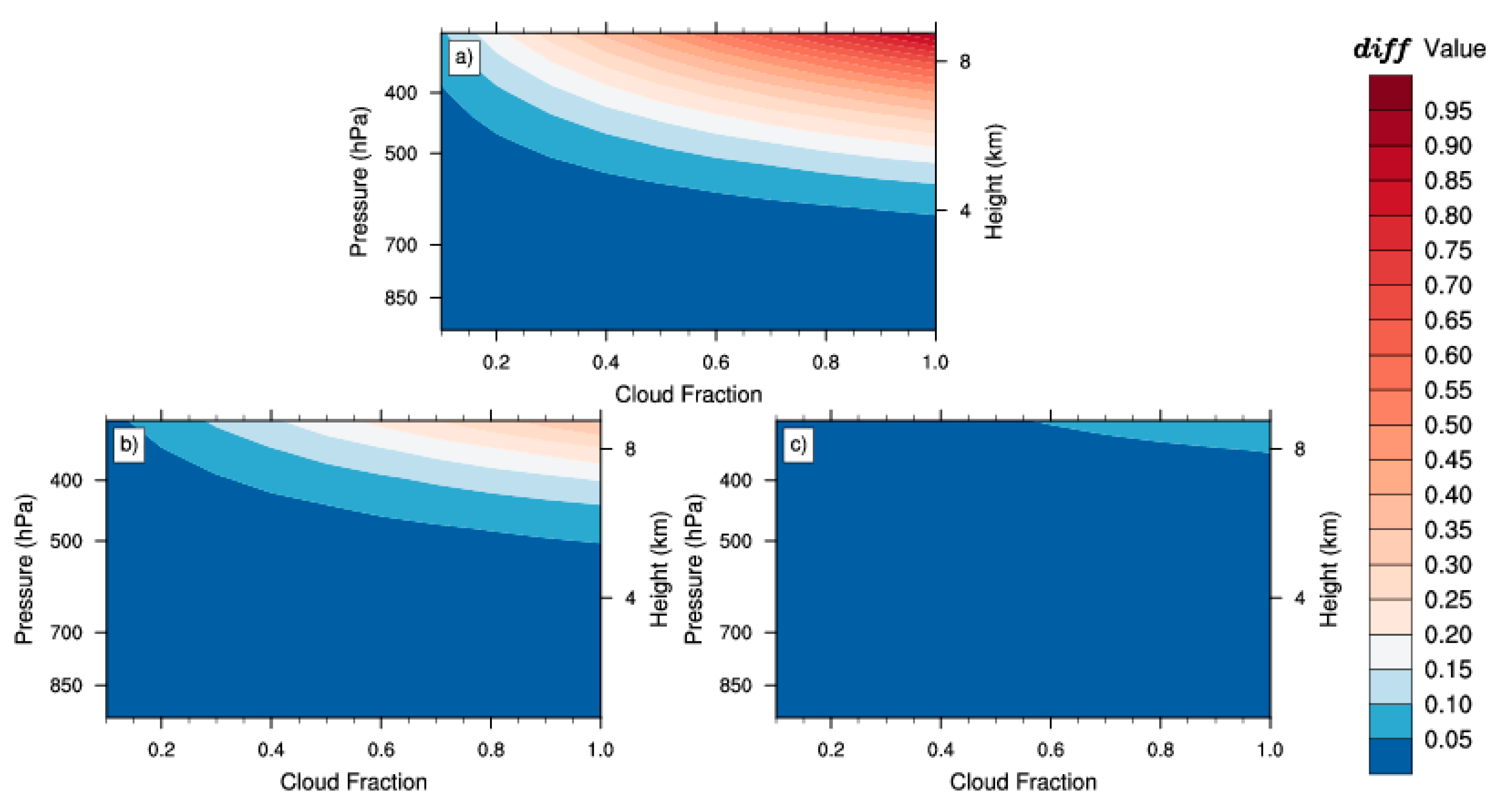
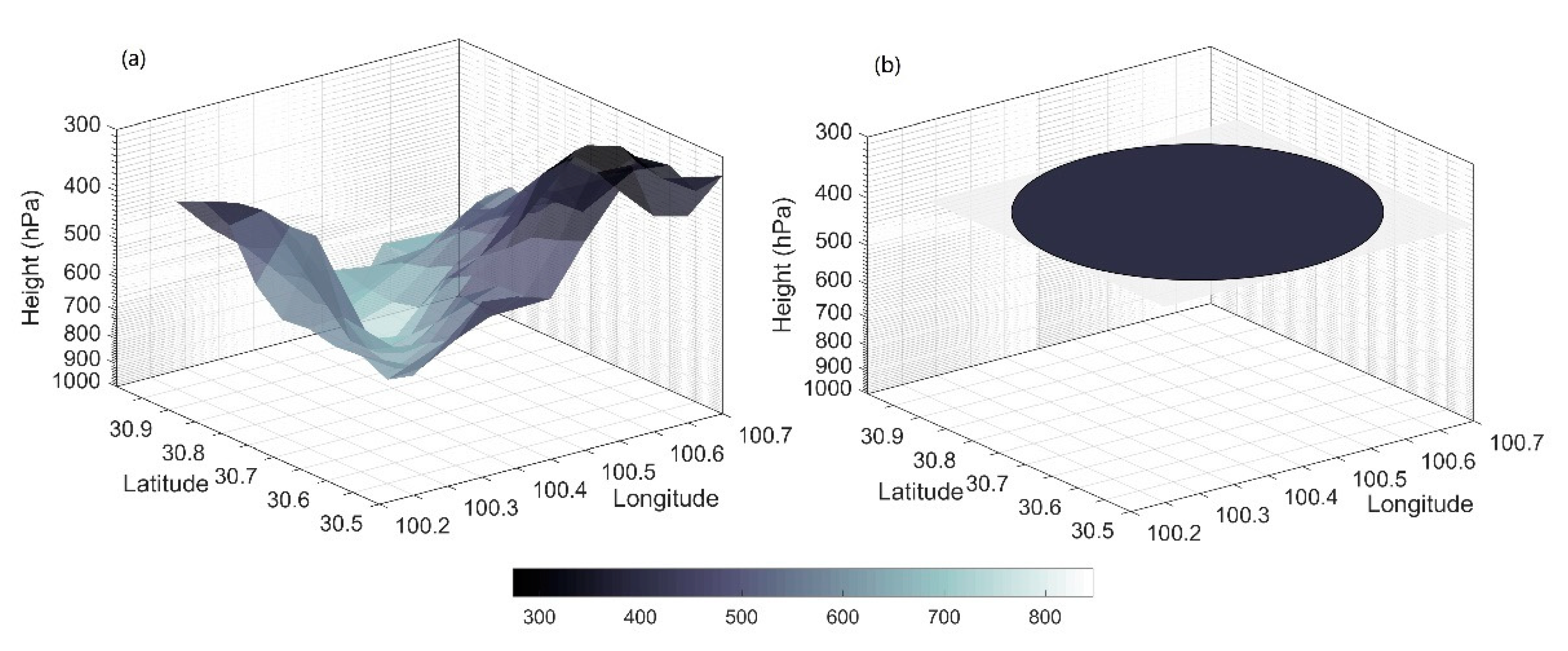


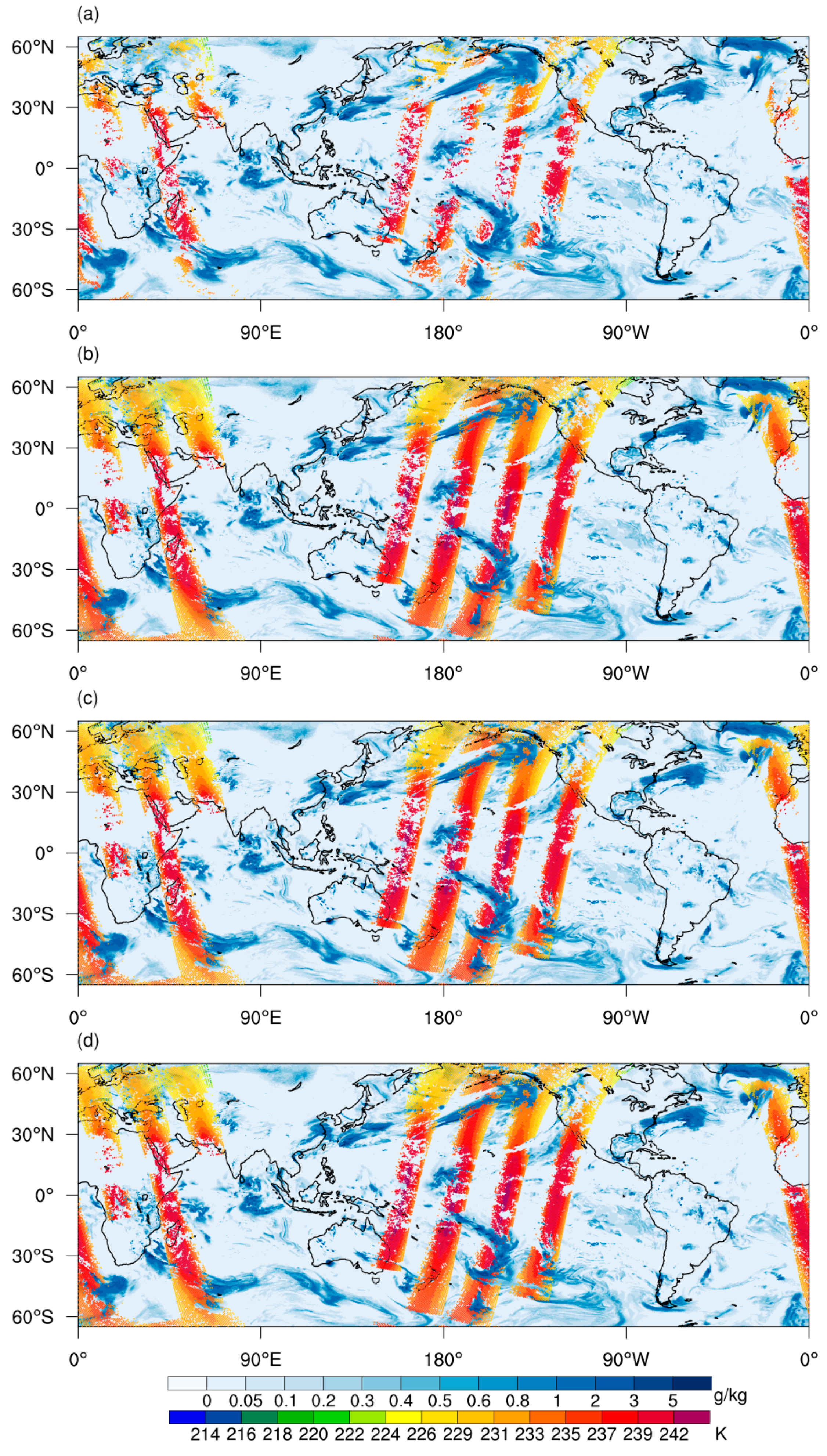
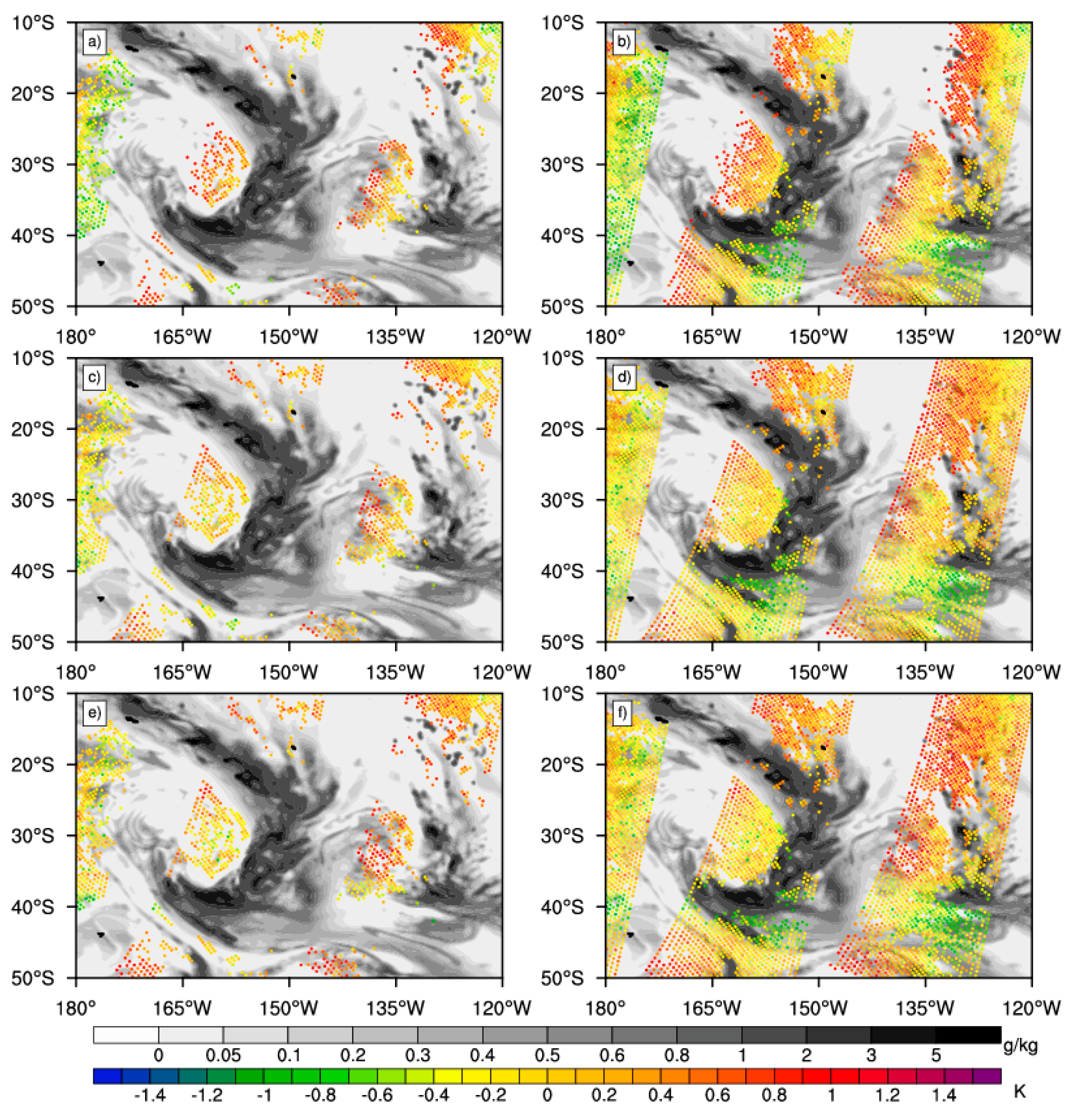

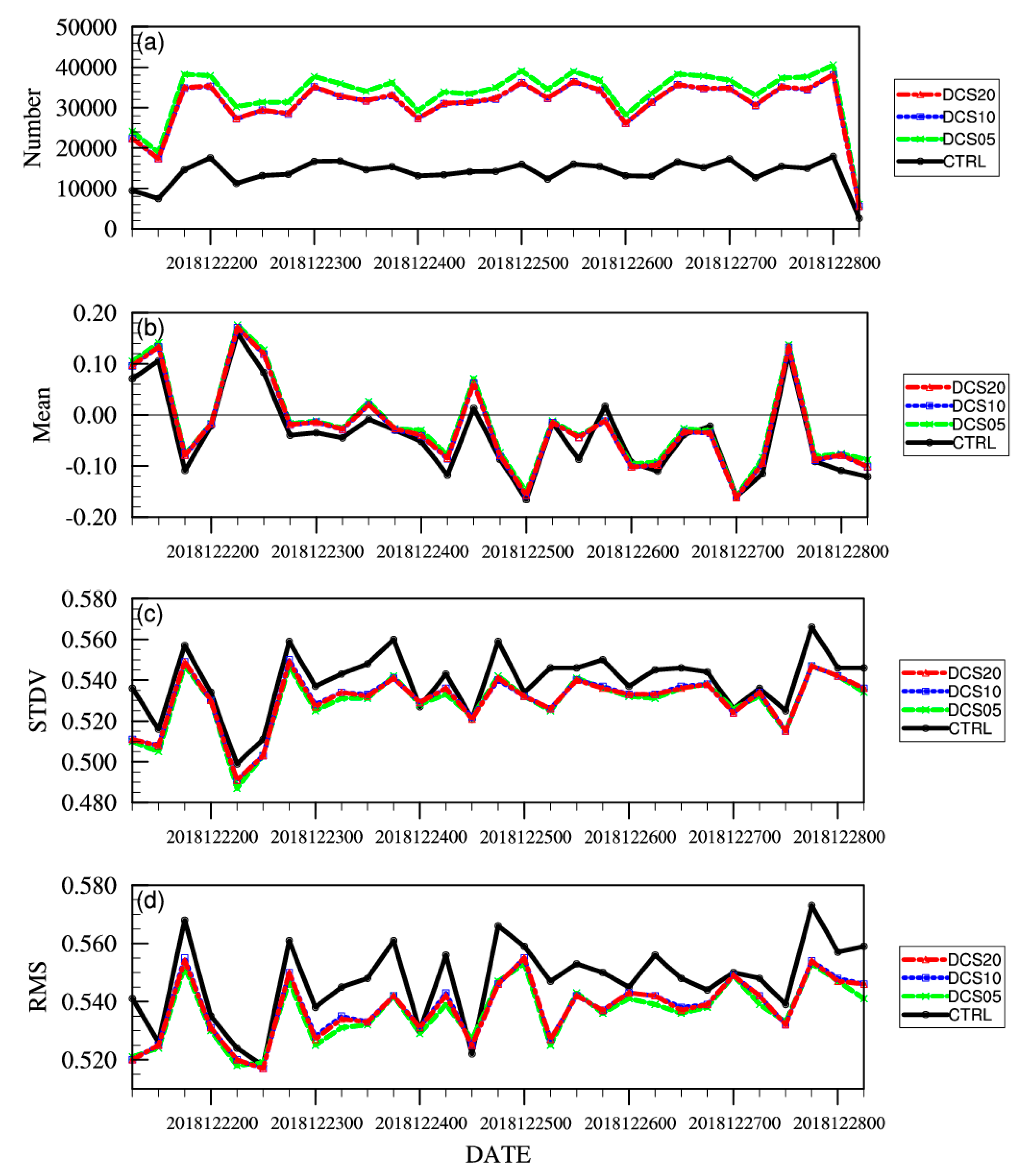
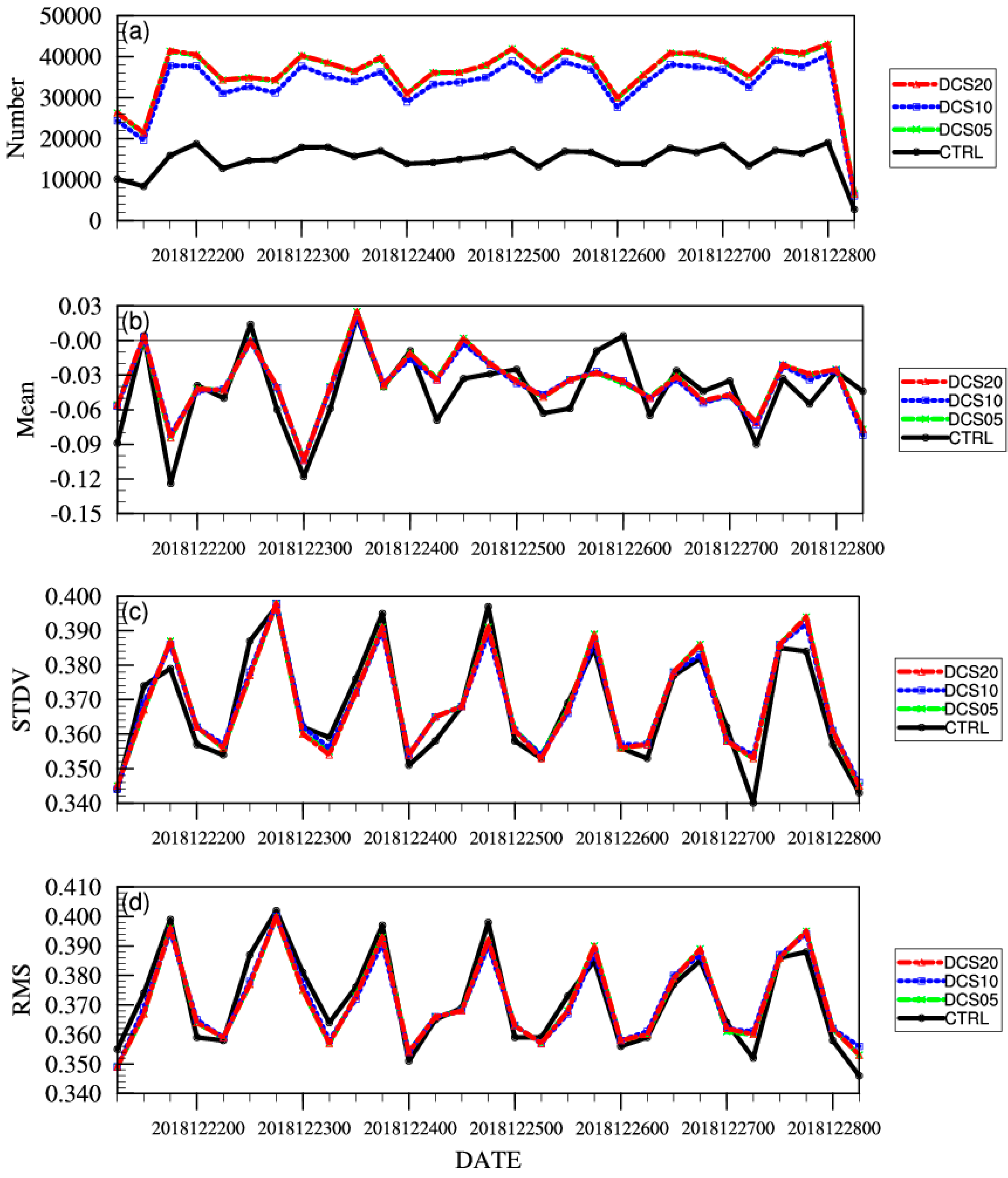
© 2020 by the authors. Licensee MDPI, Basel, Switzerland. This article is an open access article distributed under the terms and conditions of the Creative Commons Attribution (CC BY) license (http://creativecommons.org/licenses/by/4.0/).
Share and Cite
Qin, L.; Chen, Y.; Yu, T.; Ma, G.; Guo, Y.; Zhang, P. Dynamic Channel Selection of Microwave Temperature Sounding Channels under Cloudy Conditions. Remote Sens. 2020, 12, 403. https://doi.org/10.3390/rs12030403
Qin L, Chen Y, Yu T, Ma G, Guo Y, Zhang P. Dynamic Channel Selection of Microwave Temperature Sounding Channels under Cloudy Conditions. Remote Sensing. 2020; 12(3):403. https://doi.org/10.3390/rs12030403
Chicago/Turabian StyleQin, Luyao, Yaodeng Chen, Tianlei Yu, Gang Ma, Yang Guo, and Peng Zhang. 2020. "Dynamic Channel Selection of Microwave Temperature Sounding Channels under Cloudy Conditions" Remote Sensing 12, no. 3: 403. https://doi.org/10.3390/rs12030403
APA StyleQin, L., Chen, Y., Yu, T., Ma, G., Guo, Y., & Zhang, P. (2020). Dynamic Channel Selection of Microwave Temperature Sounding Channels under Cloudy Conditions. Remote Sensing, 12(3), 403. https://doi.org/10.3390/rs12030403







